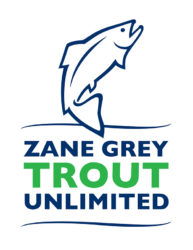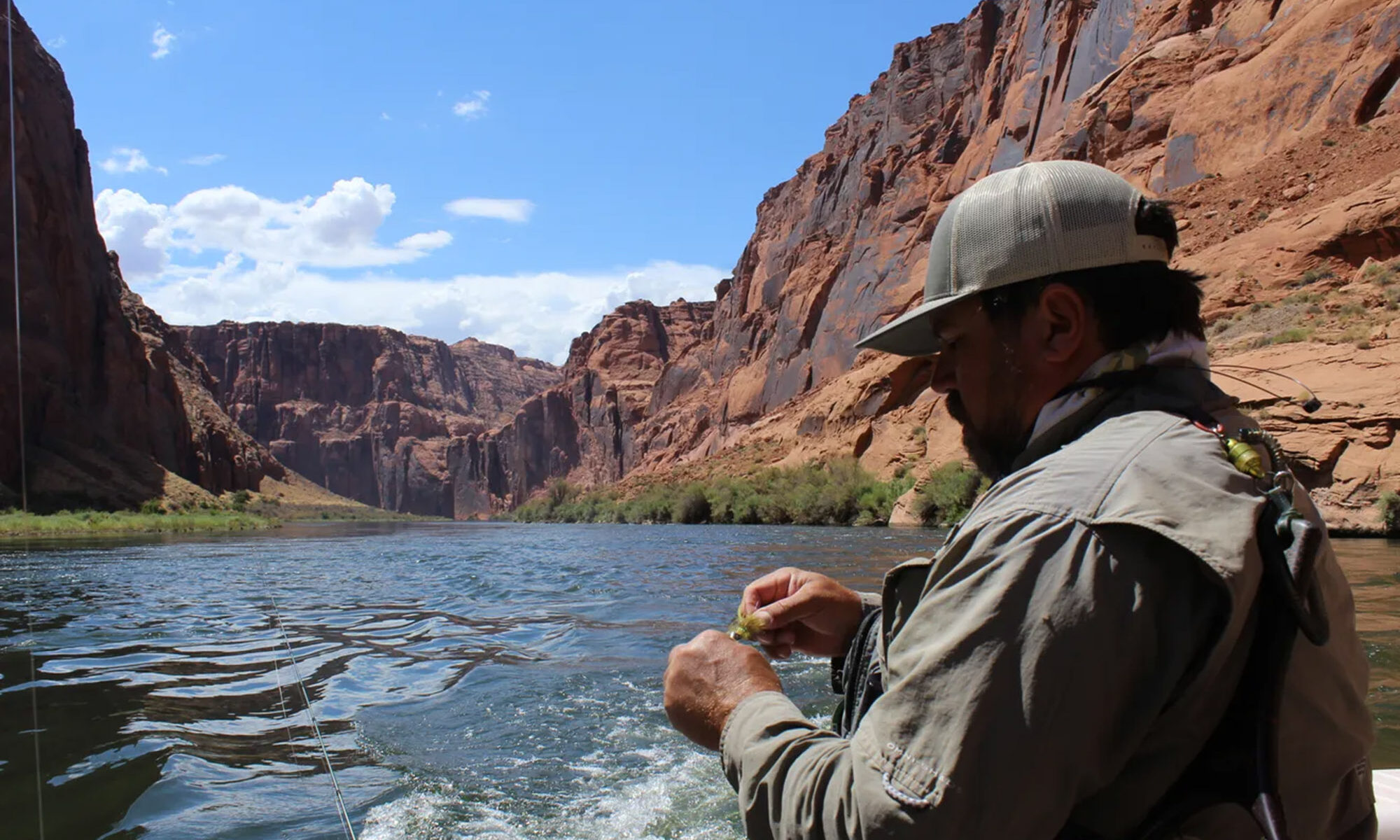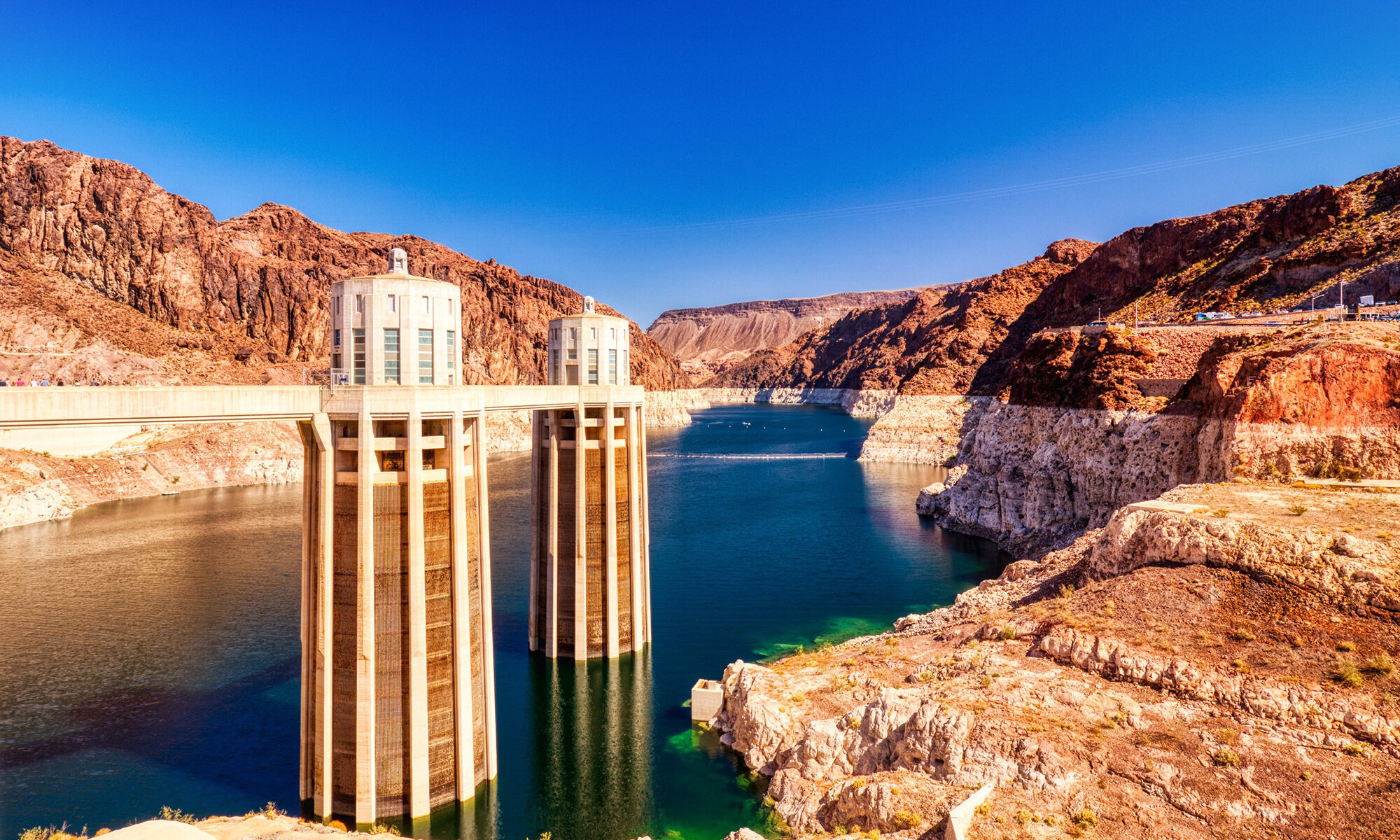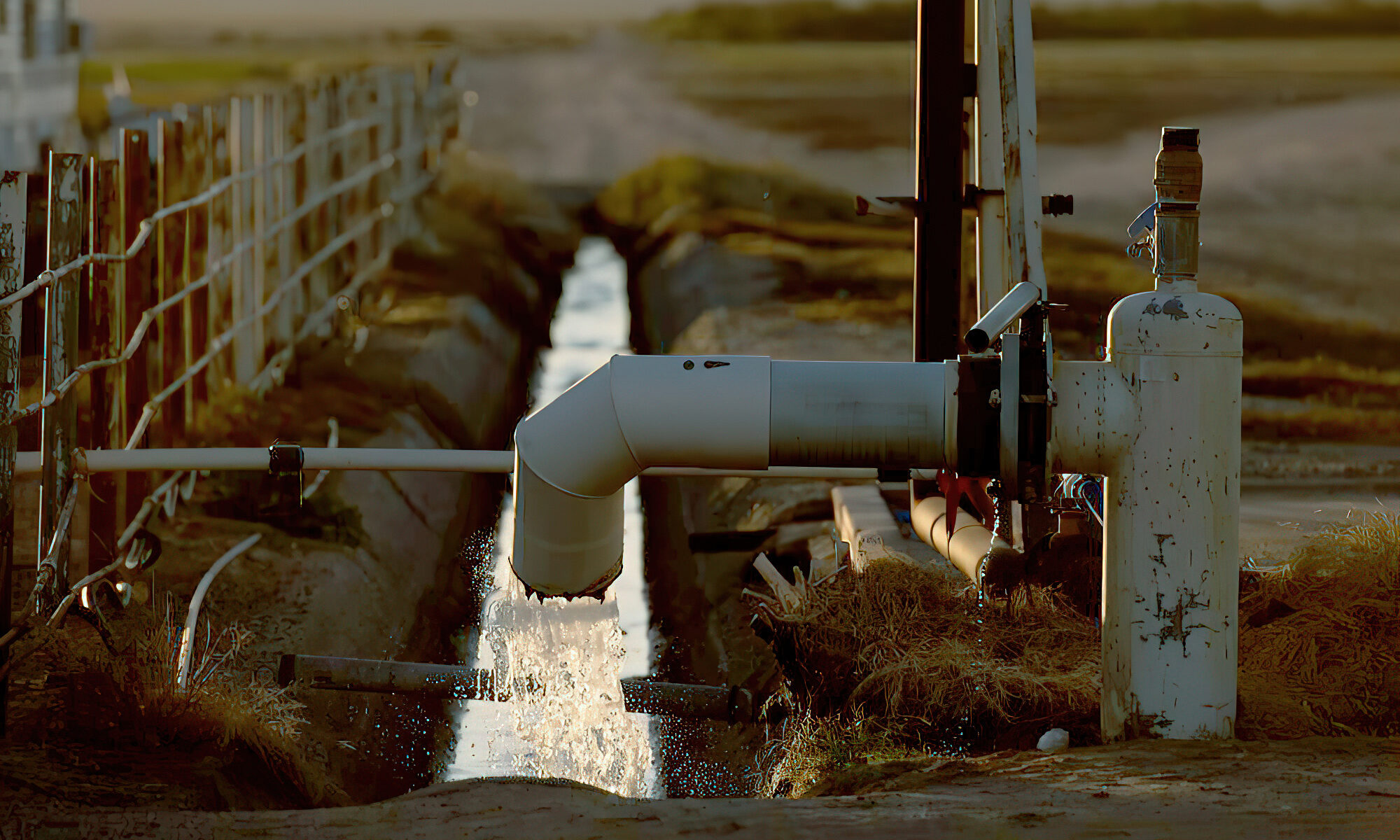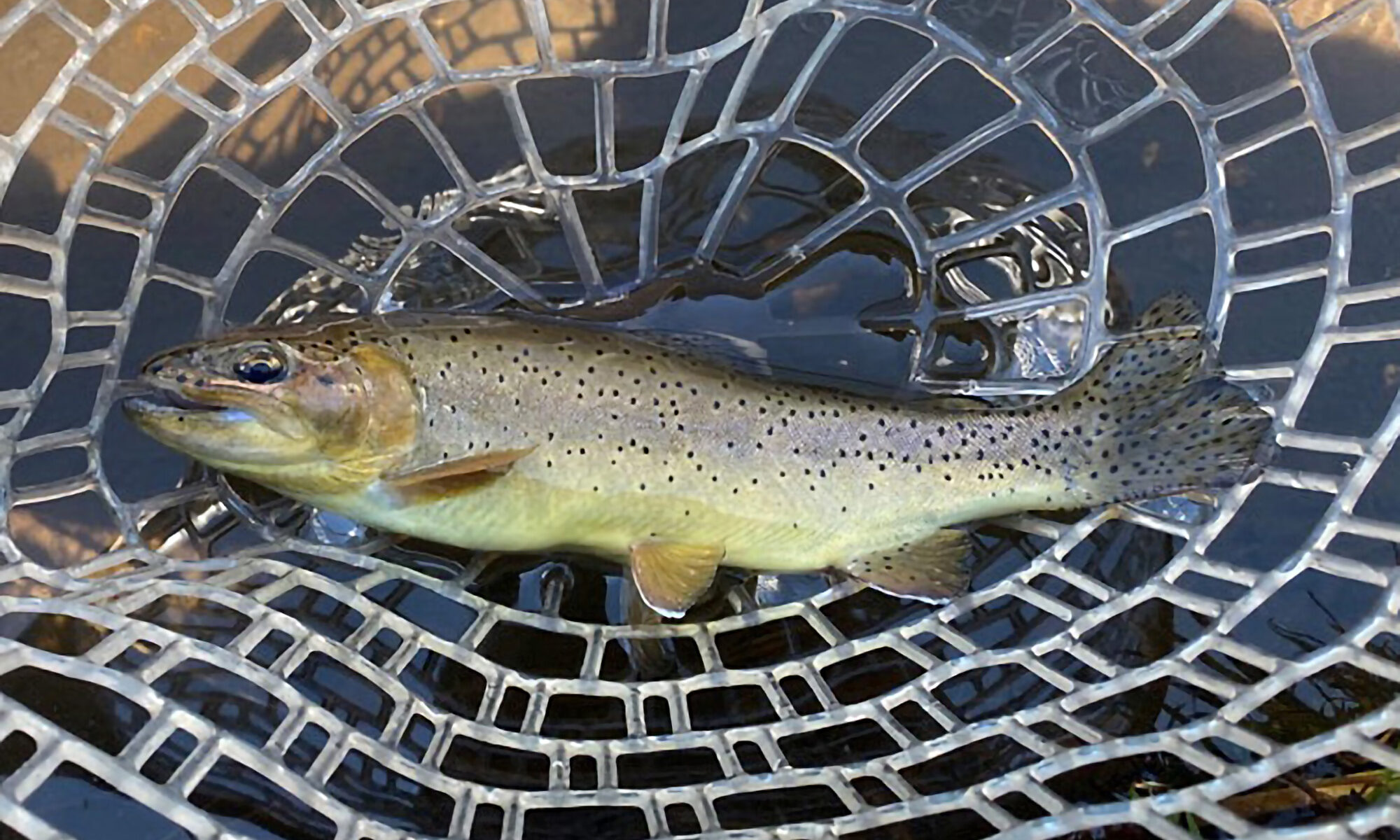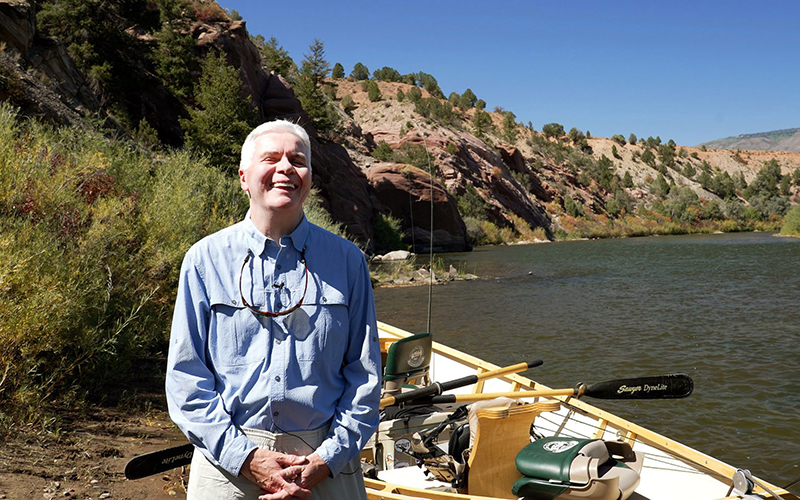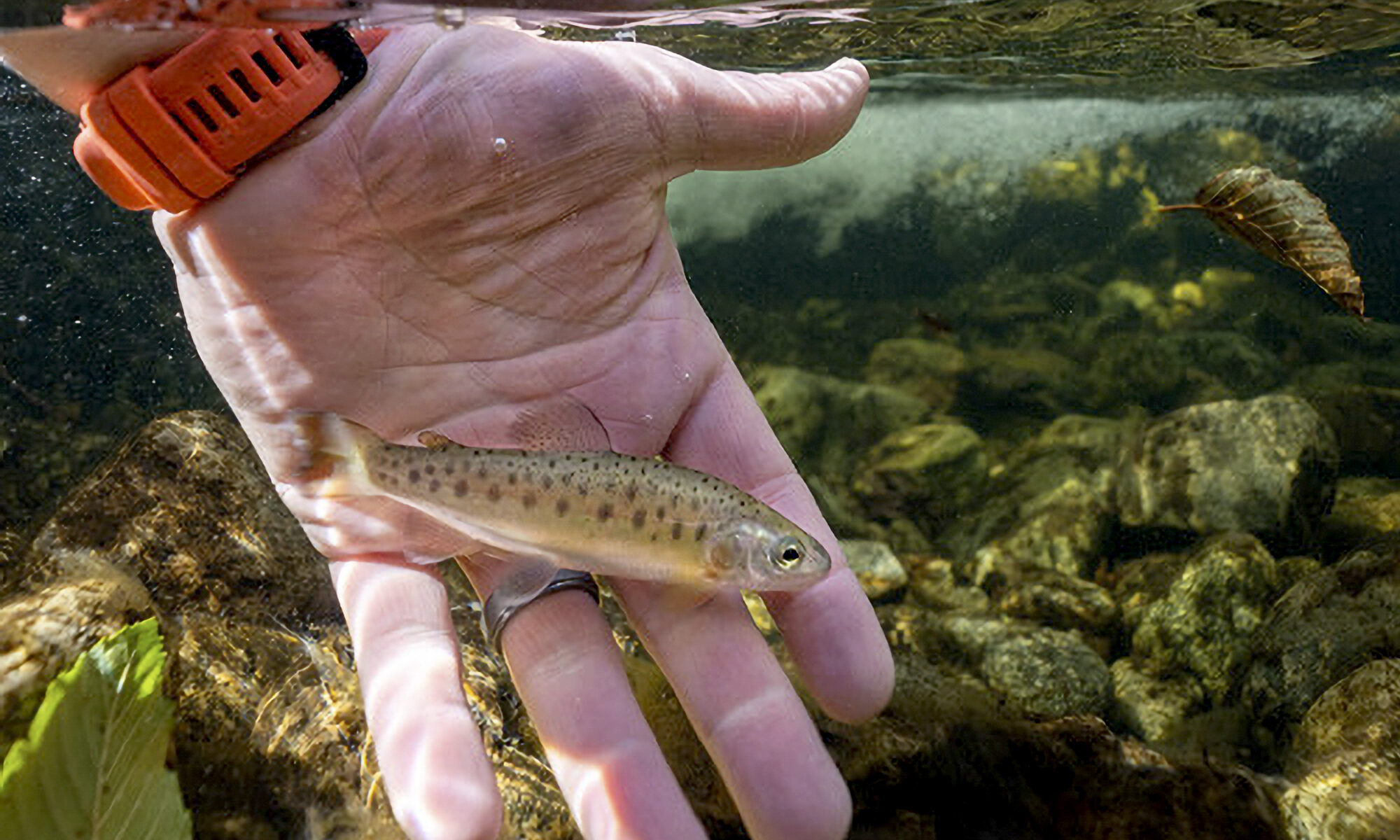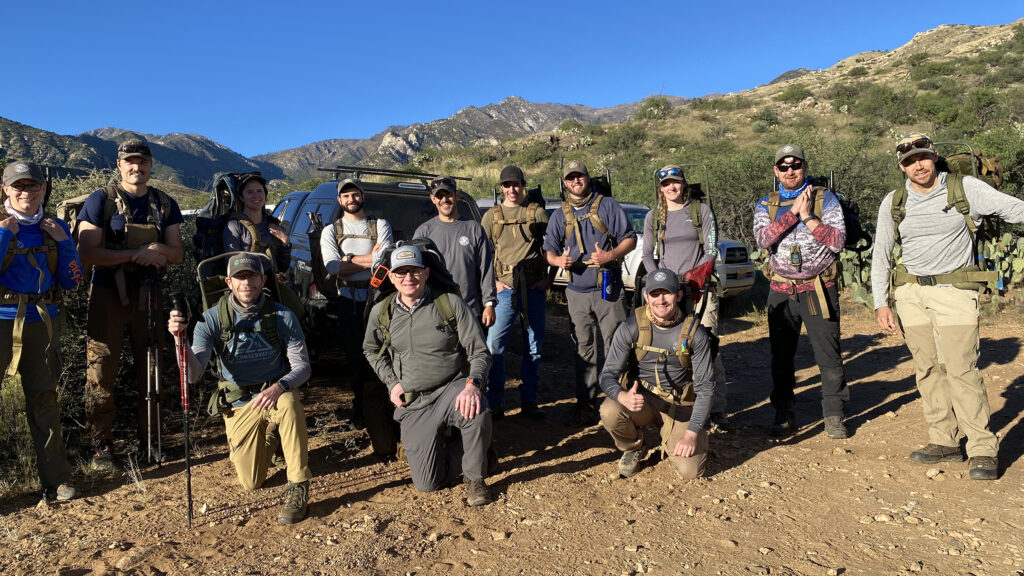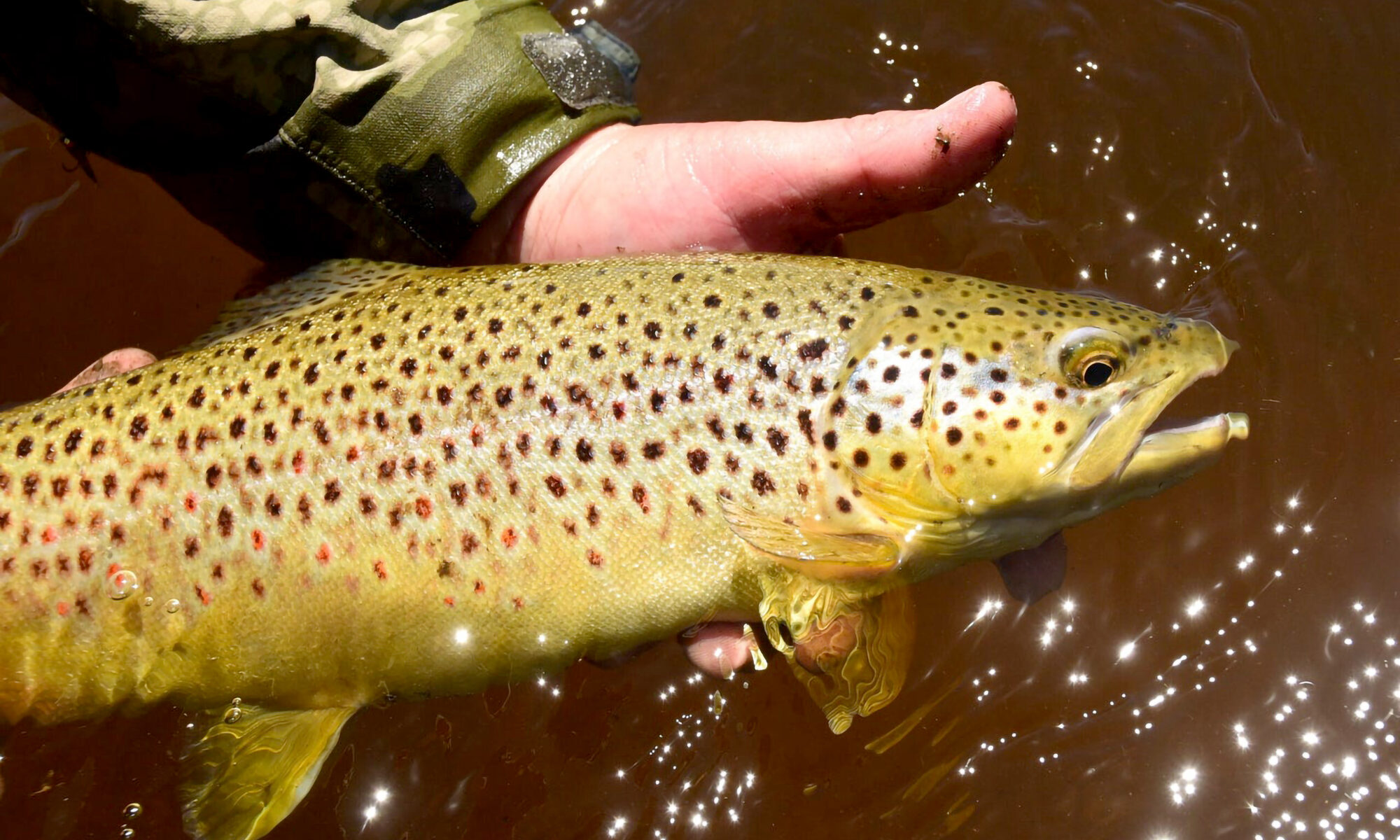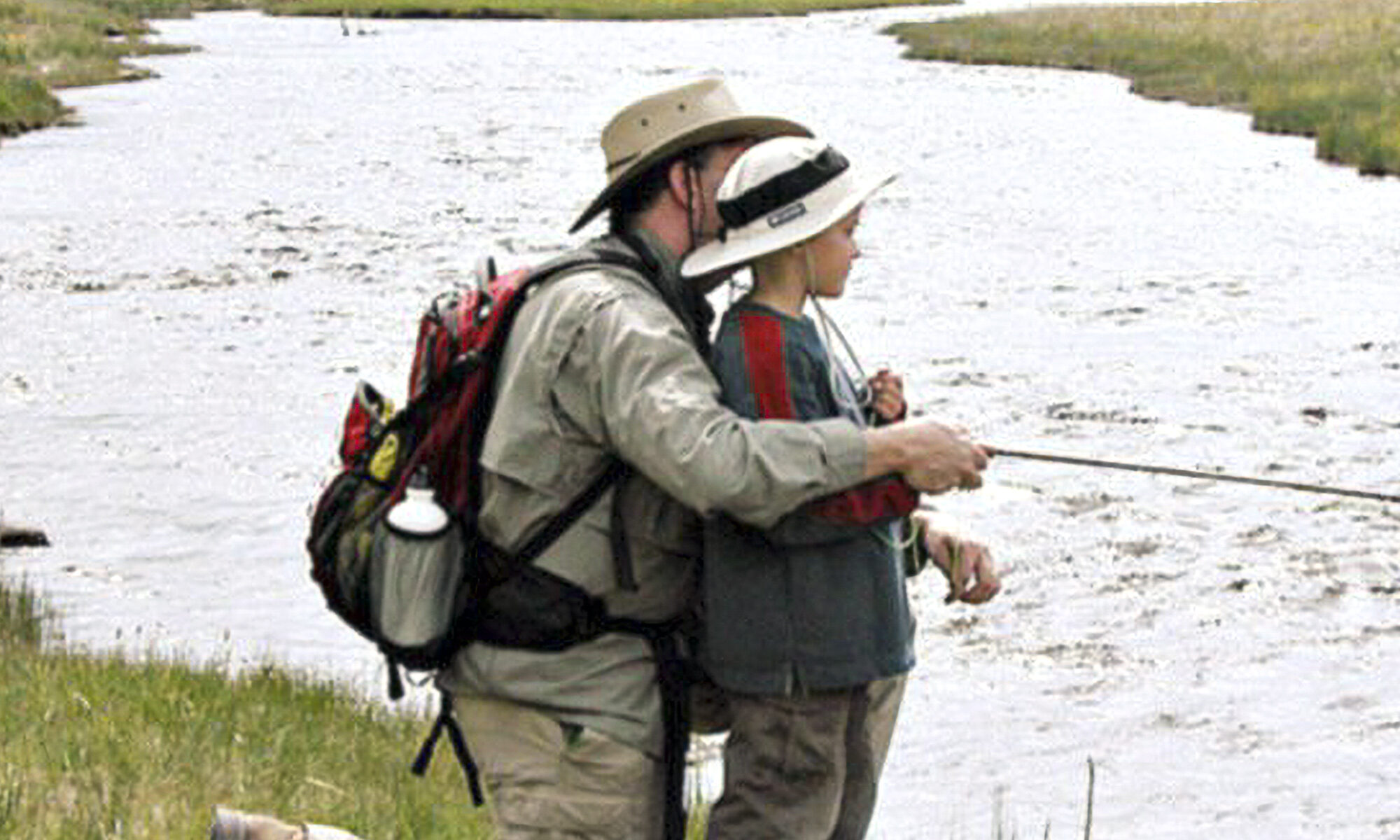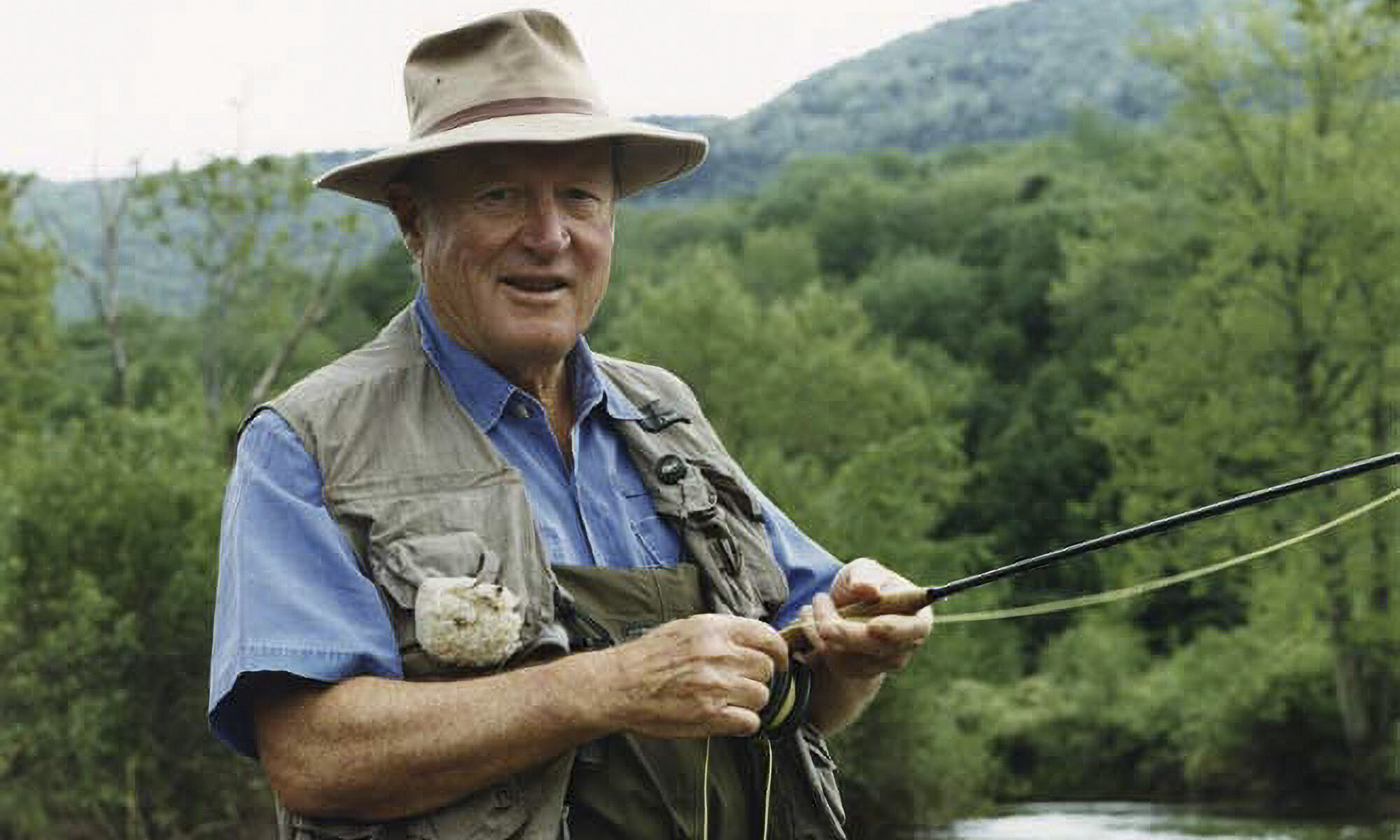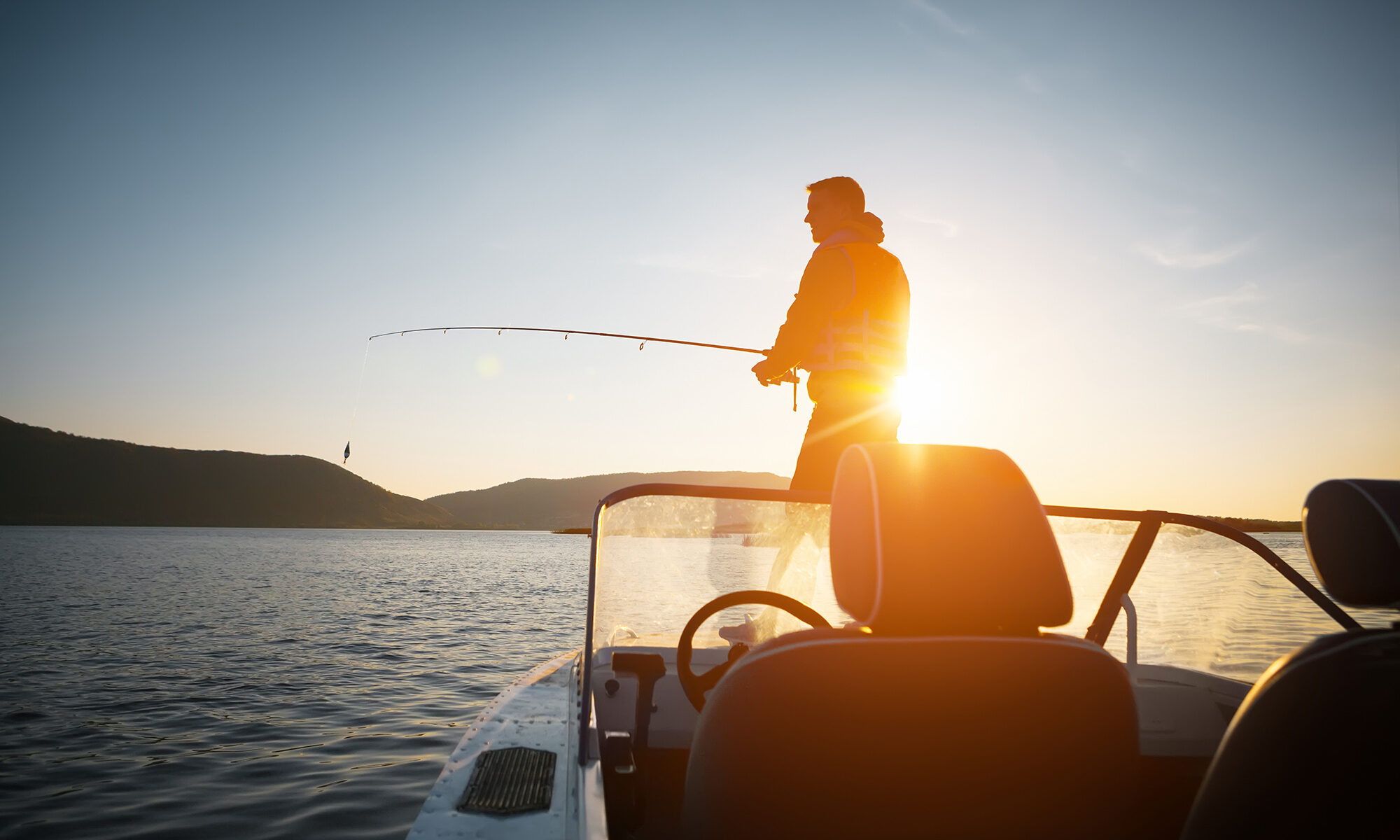LEES FERRY — A red and silver jet boat leaves the dock at Lees Ferry in Marble Canyon. Captain Kevin Campbell cruises through the Colorado River, framed on either side by sandstone that rises from the ground. The water reflects burnt orange as if the earth above it was set aflame.
Oars point ahead on port and starboard like arrows directing the vessel, and a fishing net catches the wind as the boat cuts through the river. The captain drinks from an aluminum bottle with a sticker that reads “fish more.”
Campbell is joined by Nathan Rees of the group Trout Unlimited and Michael Cravens of the Arizona Wildlife Federation. They wear wading boots as they prepare for a day of fly fishing on the river, hoping to catch and release rainbow and brown trout.
The basin surrounding the region is also home to a hodgepodge of wildlife, including beavers, bighorn sheep, elk, turtles, frogs and lizards.
The boat anchors just a few miles upstream in shallow water near some river grass. It will disappear by the top of the hour, submerged by high water levels that move in and flood the area. The men eagerly hop off the boat and into the water to cast their fly rods, their bodies submerged in water up to their hips.
They are just a few miles north of the boundary of the newly designated Baaj Nwaavjo I’tah Kukveni – Ancestral Footprints of the Grand Canyon National Monument.
This stretch of river is not only home to endangered and threatened species but is also one of the most visited regions in the state. Lees Ferry is roughly 70 miles from the north rim of Grand Canyon National Park on the Colorado River, which winds from Glen Canyon Dam through Horseshoe Bend for 15 miles before reaching the boat ramp.
The monument will safeguard water and wildlife for an area that relies on the river, in part by making permanent a ban on uranium mining. Supporters say it will also bolster recreational activities like hunting and angling, and protect natural resources and sacred sites.
“Sportsmen are users of this landscape and an important proponent when advocating for it,” said Rees, the state director for Trout Unlimited. “We wanted to make sure this national monument was sturdy and resilient.”
Sports groups rallied for the monument and want a say in managing it
Earlier this month President Joe Biden visited Red Butte, near the Canyon’s South Rim, and used his powers under the Antiquities Act to designate the area as a national monument. The 1.1 million-acre monument includes an area in the Kaibab National Forest to the south of the Grand Canyon, as well as two areas to the northwest along the Mohave-Coconino county lines, and to the northeast adjacent to the Kaibab forest.
In the past 110 years, 17 presidents, (nine Democrats and eight Republicans) have used the power of the Antiquities Act to designate 130 national monuments, ranging from Calvin Coolidge’s designation of the 320-square-foot Father Millett Cross in Youngstown, New York, to the Pacific Remote Islands National Monument designated by George W. Bush.
The Baaj Nwaavjo I’tah Kukveni – Ancestral Footprints of the Grand Canyon National Monument protects thousands of sites that are sacred to the Havasupai, Hopi, Hualapai, Paiute, Navajo, Yavapai-Apache, Zuni and Colorado River American Indian Tribes.
The monument’s name comes from the Havasupai words “baaj nwaavjo” for “where Indigenous peoples roam,” and the Hopi words “i’tah kukveny” for “our ancestral footprints.”
National monuments differ from other types of protected lands because their management plans are more flexible than national parks or wilderness areas.
This is partly why hunting and angling groups like Arizona Wildlife Federation and Trout Unlimited say they strongly supported this monument. A halt on habitat fragmentation and less contamination from mining means a healthier and more robust population of wildlife.
“We’ve been advocates for having a seat at the table to make sure that we do have access for fishing and that Game and Fish has access,” said Rees. “This will benefit the sportsmen, benefit our wildlife and benefit future generations.”
The monument will allow for continued recreational use of the land and preserve money going back to state agencies. Each year, hunting and angling add roughly $2.4 billion to the state’s economy.
National monument designations apply to existing public lands already managed by the federal government. They can prevent future actions like land swaps, or in this case mining operations, that would be damaging to wildlife and open places, according to the Arizona Wildlife Federation.
“We can’t go fragmenting and chopping up valuable public lands and wildlife habitat,” said Cravens, the advocacy and recreation director for the Arizona Wildlife Federation. “This is a very valuable region for the state.”
‘Balanced management approach’ will preserve hunting, fishing
Most monuments allow for hunting and fishing to continue as usual, but in the past the sporting community’s resistance to designation has left them without a voice in drafting management plans, which has resulted in restricted or limited access for hunting and angling.
In 2016, Trout Unlimited opposed the 1.8 million-acre Grand Canyon Watershed National Monument proposal. A primary concern at the time was the unnecessary inclusion of the North Kaibab Ranger District, an area that was already permanently protected from mining.
That proposal also omitted hunting and angling as necessary management activities, which Trout Unlimited says is needed to protect wildlife values. The group now supports the newest monument.
“The proposed national monument provides a balanced management approach,” the group said in a signed letter to the president earlier this year. “It prohibits future uranium mining and, in the process, protects and preserves exceptional fish and wildlife habitat as well as the quality of life and economic benefits the area provides to local communities, tribal nations, and water users downstream.”
The next steps for the monument will be federal agencies and tribal nations drafting a management plan for the area.
“What we want to do for the sporting community, is to make sure we have a seat at the table,” said Cravens.
Before the designation, he said, legislation was written to reflect permanent access for hunting and angling and full authority over wildlife management for the Arizona Game and Fish Department. The next steps for the Arizona Wildlife Federation and Trout Unlimited are to make sure that is reflected in the management plan.
“Hunting and angling are something that connects people to the landscape and connects people to wildlife and it is absolutely sustainable,” said Cravens. “And, you know, as ironic as that might sound to some people, it is good for wildlife as a whole.”
While some critics see hunting as unethical or cruel, biologists call it the backbone of wildlife conservation in the U.S. Hunting groups provide state wildlife agencies, like Arizona Game and Fish, with financial support that is used for management and conservation efforts, especially for threatened and endangered species.
Hunters also play an important role in helping state wildlife biologists manage the size of certain animal populations, according to experts. And fishing can help control non-native fish populations, like brown trout.
This stretch of the Colorado River is a highly productive trout fishing area. Brown trout were first introduced into the river in the 1930s and are a fish-eating predator, known to feast on young humpback chub, a threatened and native fish in Arizona.
Angling can help stabilize fish populations over more extreme mechanical removals like electrofishing or disruption of spawning beds.
“Establishing the Baaj Nwaavjo I’tah Kukveni Grand Canyon National Monument is key to protecting the region’s biological diversity and cultural values, along with its lands, waters, and wildlife,” said Sandy Bahr of the Sierra Club. “Species such as the majestic California condor and top predators such as mountain lions can be found in the footprint of the monument.”
The Grand Canyon watershed supports life for diverse plants and animals that include threatened and endangered species as well as those that have cultural ties to tribal nations. Habitats that are close to the many springs throughout the region have a species diversity that is 100 to 500 times greater than that of the surrounding area.
How the monument will stop uranium mining in wide areas
The Koffler boat, which reads, “Made in Eugene, Oregon,” on its side, pushes further up the river. About 14 miles upstream from Lees Ferry, Campbell, the captain, anchors in a marshy bank just underneath the 710-foot wall of concrete known as Glen Canyon Dam.
Shoes have turned soggy, puddles form along the grated metal floor, and the scents of SPF and fish fill the boat.
Rees points to seeps in the surrounding rocks. Water spills from fractured, porous, or faulted sandstone and seeps into the river. Such seeps have been linked to contamination by uranium, which then pours into the river and affects the supply that humans and animals both rely on.
The U.S. Geological Survey is conducting research at uranium-bearing breccia pipe deposits to investigate the potential effects of uranium exploration and mining activities on the Grand Canyon watershed. Study locations are primarily on federal lands, with a few locations on tribal lands, and include historic and active mines.
During the Cold War, uranium mining poisoned soil, water and rocks on the Navajo Nation, according to the Environmental Protection Agency.
The public lands surrounding the Grand Canyon contain high concentrations of uranium ore, according to recent studies. Mining has occurred in the area for decades and abandoned mines have harmed the environment, wildlife and humans in surrounding communities.
Pollutants from mining uranium can also contaminate aquatic ecosystems for hundreds of years or more, threatening downstream communities, fish and wildlife. Even small amounts of some pollutants can poison fish, accumulate in the food chain, and cause deformities and reproductive problems for aquatic species.
“The footprint (for the monument) is so big because that’s a contributing watershed to the Colorado River,” said Rees. “It is so important to protect the whole surrounding region because it’s a complex network of ephemeral streams on the surface that might only flow once or twice a year, but everything goes downstream into Colorado River.”
Contamination to any part of the watershed would likely have long-term impacts for wildlife in the immediate area and far downstream.
A watershed acts as a sponge, expanding and contracting with the volume of water present. Water bodies in this sponge will share organisms, nutrients and pollutants as water is transported above or below the surface, even bodies of water that don’t always flow. Thus, scientists say, all bodies of water in a watershed are intrinsically connected and depend on each other.
That means if any area in the river basin is contaminated, those pollutants will likely find their way into the Colorado and be pushed further downstream, affecting wildlife, their habitat and drinking water.
Rees said he believes there is a need for uranium mining, but there is no place for it in what he called a “sacred region” of Arizona.
According to the group Grand Canyon Trust, the area holds a vast supply of uranium, but the region is far from a linchpin for domestic uranium supply. Estimates on supply vary and depend on sampling, measurements and educated guesses.
Estimates suggest the Grand Canyon region holds only 1.3% of U.S. uranium.
‘Isn’t she gorgeous?’
Back on the river, blue dashers hover over the water. A condor soars above the area near Horseshoe Bend, and there is evidence of beavers building a dam along the stone-covered banks of the river. All these animals rely on safe watershed for life.
Rees and Cravens have caught, and released, dozens of rainbow trout in the few hours they spent on the lifeline of the west. They were on the lookout for brown trout, but with no luck.
“Isn’t she gorgeous?” Cravens says holding a rainbow trout in his palm that he pulled from a net, its skin reflecting blue, green and pinkish colors.
He drops the fish back into the water as it heads downstream away from the dam and toward the boundary of the newly protected land.
Click HERE to read the full article by Jake Frederico at azcentral.com.
